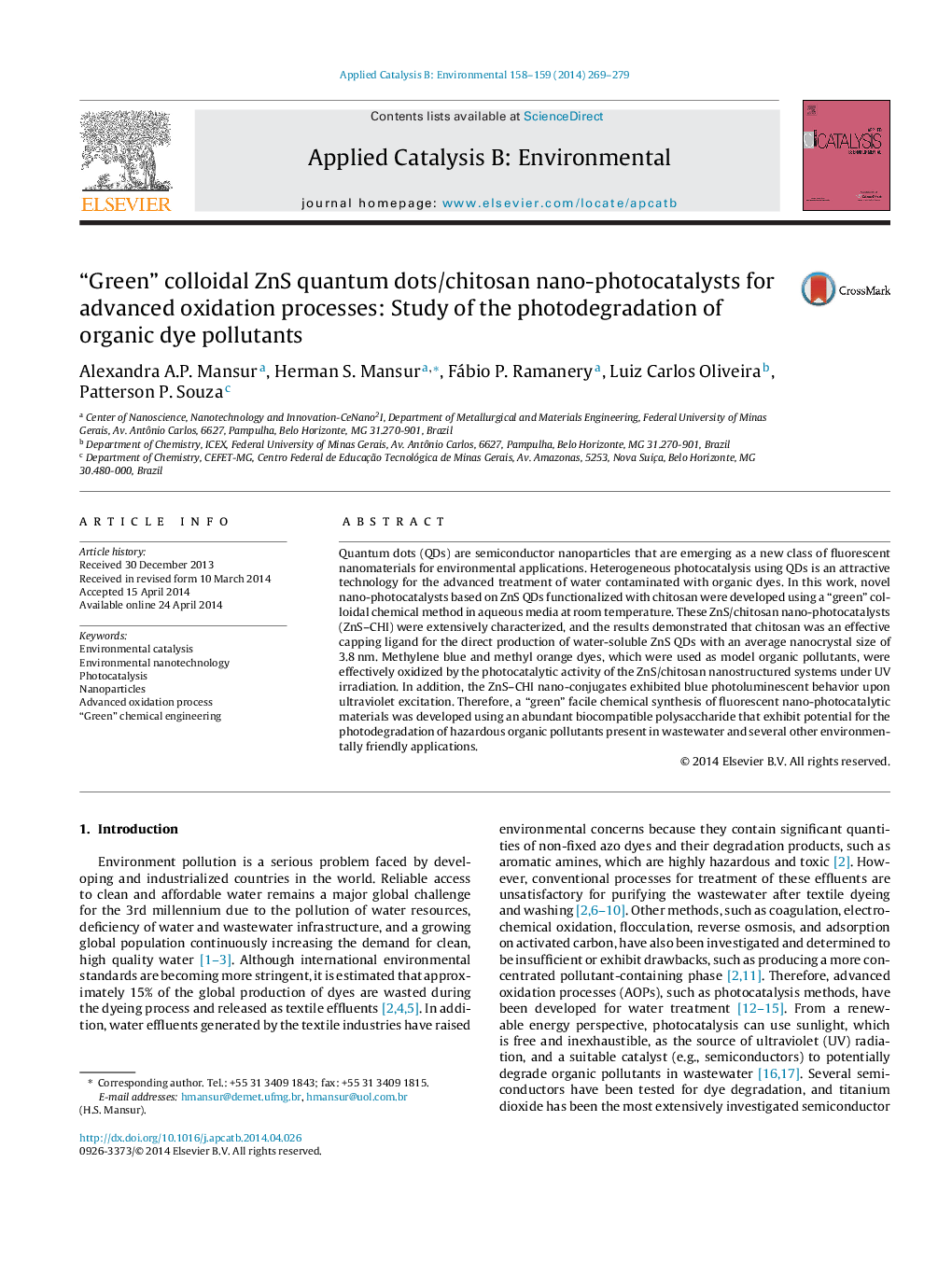| Article ID | Journal | Published Year | Pages | File Type |
|---|---|---|---|---|
| 45879 | Applied Catalysis B: Environmental | 2014 | 11 Pages |
•Synthesis of fluorescent nano-photocatalysts based on ZnS–chitosan QDs in water.•Characterisation of the ZnS QDs by UV–vis absorption, PL, FTIR and TEM methods.•ZnS–chitosan QDs showed photocatalytic activity for AOP of organic dyes.•ZnS–chitosan nanoconjugates degraded dye pollutants in water under UV.•The novel system behaved simultaneously as photocatalytic for AOP and fluorescent probe.
Quantum dots (QDs) are semiconductor nanoparticles that are emerging as a new class of fluorescent nanomaterials for environmental applications. Heterogeneous photocatalysis using QDs is an attractive technology for the advanced treatment of water contaminated with organic dyes. In this work, novel nano-photocatalysts based on ZnS QDs functionalized with chitosan were developed using a “green” colloidal chemical method in aqueous media at room temperature. These ZnS/chitosan nano-photocatalysts (ZnS–CHI) were extensively characterized, and the results demonstrated that chitosan was an effective capping ligand for the direct production of water-soluble ZnS QDs with an average nanocrystal size of 3.8 nm. Methylene blue and methyl orange dyes, which were used as model organic pollutants, were effectively oxidized by the photocatalytic activity of the ZnS/chitosan nanostructured systems under UV irradiation. In addition, the ZnS–CHI nano-conjugates exhibited blue photoluminescent behavior upon ultraviolet excitation. Therefore, a “green” facile chemical synthesis of fluorescent nano-photocatalytic materials was developed using an abundant biocompatible polysaccharide that exhibit potential for the photodegradation of hazardous organic pollutants present in wastewater and several other environmentally friendly applications.
Graphical abstractFigure optionsDownload full-size imageDownload as PowerPoint slide
